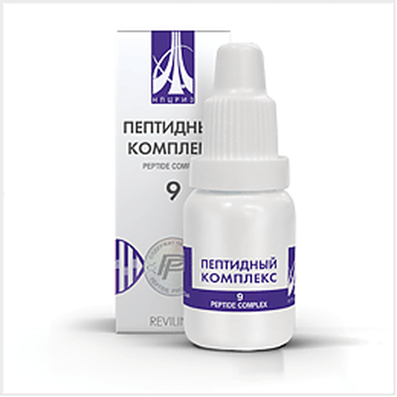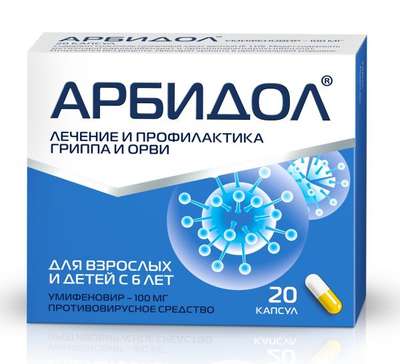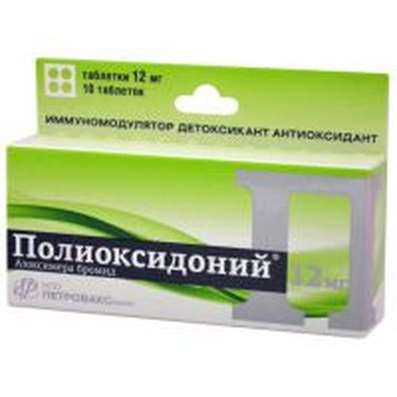Instruction for use: Exedrin
I want this, give me price
Active substance Acetylsalicylic acid + Caffeine + Paracetamol
ATX Code N02BA71 Acetylsalicylic acid in combination with psycholeptics
Pharmacological group
Analgesics combined (NSAIDs + analgesic non-narcotic remedy + psychostimulant) [NSAIDs - Salicylic acid derivatives in combinations]
Nosological classification (ICD-10)
G43 Migraine
The pain of migraine, Migraine, hemiplegic migraine, Migraine headache, A migraine attack, Continuous headache, hemicranias
K08.8.0 * Painful toothache
Dentinal pain, Dentinal pains, Pain pulpitis, Anesthesia in dentistry, Pain syndromes in dental practice, Pain after removal of tartar, Pain when extracting a tooth, Toothache, Pain after dental interventions
M25.5 Pain in the joint
Arthralgia, Pain syndrome in musculo-articular diseases, Pain syndrome in osteoarthritis, Pain syndrome in osteoarthritis, Pain syndrome in acute inflammatory diseases of the musculoskeletal system, Pain syndrome in chronic inflammatory diseases of the musculoskeletal system, Pain in the joints, Soreness of the joints, Soreness of joints in severe physical exertion, Painful inflammatory joint damage, Painful conditions of the musculoskeletal system, Painful joint conditions, Painful traumatic affection of joints, Pain in the musculoskeletal system, Pain in Shoulder Joints, Pain in the joints, Joint pain, Joint pain with injuries, Musculoskeletal pain, Pain with osteoarthritis, Pain in the pathology of the joints, Pain in rheumatoid arthritis, Pain in chronic degenerative bone diseases, Pain in chronic degenerative joint diseases, Bone-joint pain, Joint pain, Arthritic pain of rheumatic origin, Articular pain syndrome, Joint pain, Rheumatic pain, Rheumatic pains
M79.1 Myalgia
Myofascial pain syndromes ,Pain syndrome in musculo-articular diseases, Pain syndrome in chronic inflammatory diseases of the musculoskeletal system, Pain in the muscles, Tenderness of muscles, Muscular soreness in severe physical exertion, Painful conditions of the musculoskeletal system, Pain in the musculoskeletal system, Pain in the muscles, Pain at rest, Muscle aches, Muscle pain, Musculoskeletal pain, Myalgia, Muscle pain, Muscle pain at rest, Muscle pain, Muscular pain of non-rheumatic origin, Muscle pain of rheumatic origin, Acute muscle pain, Rheumatic pain, Rheumatic pains, Myofascial syndrome, Fibromyalgia
M79.2 Neurology and neuritis, unspecified
Pain syndrome with neuralgia, Brachialgia, Occipital and intercostal neuralgia, Neuralgia, Neuralgic pain, Neuralgia, Neuralgia of intercostal nerves,Neuralgia of the posterior tibial nerve, Neuritis, Neuritis traumatic, Neuritis, Neurological Pain Syndromes, Neurological contractures with spasms, Acute neuritis, Peripheral neuritis,Post-traumatic neuralgia,Severe pain of a neurogenic nature, Chronic neuritis, Essential neuralgia
N94.0 Pain in the middle of the menstrual cycle
Algomenorea, Painful menstruation, Menalgia, Pain in menstruation
N94.6 Dysmenorrhea Unspecified
Pain during menstruation, Functional disorders of the menstrual cycle, Menstrual cramps, Emmeniopathy, Pain during menstruation, Painful menstrual irregularities, algomenorrhea, algomenoreya, Pain smooth muscle spasm, Pain spasm of smooth muscles (renal and biliary colic, intestinal spasms, dysmenorrhea), Pain spasm of smooth muscles of internal organs (kidney and biliary colic, intestinal spasms, dysmenorrhea), Disalgomenoreya, dysmenorrhea, Dysmenorrhea (essential) (Exfoliative), menstrual disorder, menstruation painful, metrorrhagia, Violation of the menstrual cycle, Menstrual irregularities, Prolaktinzavisimoe menstrual disorders, Prolaktinzavisimoe menstrual dysfunction, Pain spasm of smooth muscles of internal organs, Spasmodic dysmenorrhea, Primary disalgomenoreya
R51 Headache
Pain in the head, Cephalgia, Pain with sinusitis, Pain in the back of the head, Painful headache, Headache of vasomotor genesis, Headache of vasomotor origin, Headache with vasomotor disorders, Headache, Neurological headache, Serial headache
R52.2 Other constant pain
Pain syndrome, rheumatic origin, Pain at vertebral lesions, Pain in the chamber, Pain for burns, Pain syndrome weak or moderate, Perioperative pain,Moderate to severe pain, Moderately or weakly expressed pain syndrome, Moderate to severe pain, Ear pain of otitis, Neuropathic pain, neuropathic pain
R52.9 Unspecified Pain
Pain after cholecystectomy, Pain shooting, Non-malignant pain, Obstetric and gynecological pain, Pain syndrome, Pain in the postoperative period, Pain in the postoperative period after orthopedic surgery, Pain of inflammatory genesis, Pain than cancer genesis, Pain syndrome after diagnostic procedures, Pain after surgery Diagnostic, Pain after surgery, Pain after orthopedic surgery, Pain after injuries, Pain after the removal of hemorrhoids, Pain at the non-rheumatic inflammation of nature, Pain in inflammatory lesions of the peripheral nervous system, Pain in diabetic neuropathy, Pain in acute inflammatory diseases of the musculoskeletal system, Pain when the tendon pathology, Pain smooth muscle spasm, Pain spasm of smooth muscles (renal and biliary colic, intestinal spasms, dysmenorrhea), Pain spasm of smooth muscles of internal organs, Pain spasm of smooth muscles of internal organs (kidney and biliary colic, intestinal spasms, dysmenorrhea), Pain in trauma syndrome, Pain with injuries and after surgical interventions, Pain in chronic inflammatory diseases of the musculoskeletal system, Pain with duodenal ulcer, Pain syndrome in gastric ulcer, Pain syndrome in gastric ulcer and duodenal ulcer, pain, Pain during menstruation, pain syndromes, painful condition, Painful foot fatigue, Sore gums when wearing dentures, Soreness of the cranial nerves exit points, Painful menstrual irregularities, Painful dressings, Painful muscle spasm, Painful teeth growth, Melosalgia, Pain in the area of the surgical wound, Pain in the postoperative period, Pain in the body, Pain after diagnostic procedures, Pain after orthopedic surgery, Pain after surgery, The pains of the flu, Pain in diabetic polyneuropathy, Pain for burns, Pain during sexual intercourse, Pain during diagnostic procedures, Pain during therapeutic procedures, for colds Pain, Pain in sinusitis, Pain in trauma, Pain traumatic, The pain in the postoperative period, Pain after diagnostic procedures, The pain after sclerotherapy, Pain after surgery, postoperative Pain, Pain postoperative and posttraumatic, posttraumatic pain, Pain when swallowing, Pain in infectious and inflammatory diseases of the upper respiratory tract, The pain of burns, The pain in traumatic muscle injury, Pain in trauma, The pain of tooth extraction, The pain of traumatic origin, Pain caused by spasm of smooth muscles, Expressed pain syndrome, Expressed pain syndrome, traumatic origin, Postoperative pain, Post-traumatic pain, Post-traumatic pain syndrome, Torpid pain, Traumatic pain, Traumatic pain, Mild pain, Moderately severe pain, Moderate pain, Polyarthralgia with polymyositis
Composition
Tablets covered with a film membrane 1 tab.
active substances:
paracetamol 250 mg
acetylsalicylic acid 250 mg
caffeine 65 mg
auxiliary substances: giprolose - 5 mg; MCC (microcrystalline cellulose) - 100 mg; stearic acid 2.5 mg
film coating: carnauba wax - 0.08 mg; white film material (hypromellose, titanium dioxide, propylene glycol, povidone, sorbitan laurate, polysorbate 20, mineral oil, benzoic acid, simethicone emulsion, brilliant blue dye) - 4.48 mg
Description of dosage form
Tablets of oblong form of white color, covered with a film shell, with engraving "E" on one side.
A cross-sectional view is the core of a white or almost white color.
pharmachologic effect
Pharmacological action - anti-inflammatory, antipyretic, analgesic, improving cerebral circulation.
Pharmacodynamics
ExedrinŽ is a combined preparation containing paracetamol, acetylsalicylic acid and caffeine.
Paracetamol has an analgesic, antipyretic and extremely weak anti-inflammatory effect, which is due to its influence on the thermoregulatory center in the hypothalamus and a weak ability to inhibit the synthesis of PG (prostaglandins) in peripheral tissues. Acetylsalicylic acid has analgesic, antipyretic and anti-inflammatory action. Rapidly relieves pain, especially caused by the inflammatory process, and also moderately inhibits platelet aggregation and slows the process of thrombosis, improving microcirculation in the focus of inflammation.
Caffeine increases the reflex excitability of the spinal cord, excites the respiratory and vasomotor centers, dilates the blood vessels of skeletal muscles, brain, heart, kidneys, reduces platelet aggregation. Reduces drowsiness, fatigue, increases mental and physical performance. In this combination, caffeine in a small dose has practically no stimulating effect on the central nervous system, but it contributes to the normalization of the vascular tone of the brain and the acceleration of blood flow in it.
Pharmacokinetics
Paracetamol is easily absorbed into the digestive tract (gastrointestinal tract), Tmax in the blood plasma - in the interval from 30 minutes to 2 hours after administration. Paracetamol is metabolized in the liver and excreted by the kidneys, mainly in the form of glucuronides and sulfate conjugates. Less than 5% of paracetamol is excreted unchanged. The duration of T1 / 2 varies from 1 to 4 hours. The connection with plasma proteins is negligible at usual therapeutic doses, but increases with increasing dose.
Hydroxylated metabolite, formed in small amounts in the liver under the influence of mixed oxidases and usually rendered harmless by binding to glutathione, can accumulate in case of an overdose of paracetamol and cause liver damage.
Acetylsalicylic acid is rapidly and completely absorbed, undergoes rapid hydrolysis in the gastrointestinal tract, liver and blood to the formation of salicylates, which undergo further metabolism, mainly in the liver.
Caffeine is absorbed completely and quickly. Tmax in blood plasma - in the interval from 5 to 90 minutes after taking an empty stomach. In adults, excretion occurs almost entirely through hepatic metabolism. There is a pronounced variability in the individual values of elimination in adults. The mean T1 / 2 from plasma was 4.9 hours (in the range 1.9-12.2 hours). Caffeine is distributed in all body fluids. Communication of caffeine with plasma proteins is 35%. Caffeine is almost completely metabolized by oxidation, demethylation and acetylation and excreted by the kidneys. The main metabolites are 1-methylxanthine, 7-methylxanthine, 1,7-dimethylxanthine.
Indications of ExedrinŽ
Pain syndrome of medium and light intensity of various origins: headache, migraine, toothache, neuralgia, arthralgia and myalgia (pain in muscles and joints), algodismenorea (pain in menstruation).
Contraindications
hypersensitivity to any of the components in the formulation;
erosive and ulcerative lesions of the gastrointestinal tract in the phase of exacerbation;
gastrointestinal bleeding;
complete or incomplete combination of bronchial asthma, relapsing polypnosis of the nose and paranasal sinuses and intolerance to acetylsalicylic acid or other NSAIDs (including in the anamnesis);
surgical interventions accompanied by bleeding;
hemophilia;
hemorrhagic diathesis;
hypoprothrombinemia;
severe arterial hypertension;
portal hypertension;
severe course of ischemic heart disease;
glaucoma;
avitaminosis K;
kidney failure;
simultaneous use of other drugs containing paracetamol, acetylsalicylic acid or other NSAIDs (non-steroidal anti-inflammatory drugs);
deficiency of glucose-6-phosphate dehydrogenase;
increased excitability;
sleep disorders;
pregnancy;
lactation;
Children under 15 years of age (the risk of developing Reye's syndrome in children with hyperthermia in the presence of viral diseases).
With caution: gout or arthritis; liver disease; headaches associated with head trauma; reception of anticoagulants, hypoglycemic agents, as well as simultaneous administration of drugs containing acetylsalicylic acid or other analgesic and antipyretic components.
pregnancy and lactation
Despite the fact that acetylsalicylic acid can be used in the second trimester of pregnancy, the safety of this combination in pregnant and breast-feeding has not been studied, so the drug is contraindicated in pregnancy (in all trimesters) and breastfeeding.
Side effects
Gastralgia, nausea, vomiting, hepatotoxicity, nephrotoxicity, erosive and ulcerative gastrointestinal lesions, allergic reactions, tachycardia, increased blood pressure, bronchospasm. With prolonged use - dizziness, headache, visual disturbances, tinnitus, decreased platelet aggregation, hypocoagulation, hemorrhagic syndrome (nosebleeds, bleeding gums, purpura), kidney damage with papillary necrosis, deafness, malignant exudative erythema (Stevens-Johnson syndrome ), toxic epidermal necrolysis (Lyell's syndrome), Reye's syndrome in children (hyperpyrexia, metabolic acidosis, disorders of the nervous system and psyche, vomiting, liver dysfunction).
Interaction
The drug can enhance the action of heparin, indirect coagulants, reserpine, steroid hormones and hypoglycemic drugs (drug).
Simultaneous use with other NSAIDs, methotrexate increases the risk of side effects.
Reduces the effectiveness of spironolactone, furosemide, hypotensive drugs, as well as anti-gouty drugs that promote the excretion of uric acid.
Barbiturates, rifampicin, salicylamide, antiepileptic drugs and other inducers of microsomal liver enzymes contribute to the formation of toxic metabolites of paracetamol that affect liver function.
Metoclopramide accelerates the absorption of paracetamol. Under the influence of paracetamol T1 / 2 chloramphenicol increases by 5 times.
With repeated admission, paracetamol can enhance the effect of anticoagulants (coumarin derivatives).
Simultaneous reception of paracetamol, acetylsalicylic acid and alcoholic beverages increases the risk of hepatotoxic effects. Caffeine accelerates the absorption of ergotamine.
Dosing and Administration
Inside, during or after a meal.
Adults and adolescents from the age of 15: 1 table. every 4-6 hours.
At the first signs of migraine, 2 tablets are taken.
The average daily dose is 3-4 tablets. per day, the maximum daily dose is 6 tablets. in a day.
After taking 2 tablets. relief of headache and other types of pain usually occurs quickly - after 15 minutes, with migraine, relief usually occurs after 30 minutes.
With pain syndrome, the drug should not be taken for more than 5 days without consulting a doctor; When migraine, the drug should not be taken more than 3 days without consulting a doctor.
Overdose
Symptoms caused by the presence of paracetamol (when taken in doses of more than 10-15 g / day): during the first 24 hours, pale skin, nausea, vomiting, anorexia, abdominal pain, glucose metabolism disorder, metabolic acidosis. Symptoms of liver dysfunction may appear 12-48 hours after an overdose.
In severe overdose - liver failure with progressive encephalopathy, coma, death; acute renal failure with tubular necrosis (including in the absence of severe liver damage); arrhythmia, pancreatitis. Hepatotoxic effect in adults is manifested when taking 10 g or more.
Symptoms caused by the presence of acetylsalicylic acid (when taken in doses of more than 150 mg / kg): with light intoxication - nausea, vomiting, tinnitus, visual impairment, dizziness, severe headache. In severe poisoning - hyperventilation of the lungs of the central genesis (dyspnea, choking, cyanosis, cold sticky sweat, respiratory paralysis), respiratory acidosis. The greatest risk of chronic intoxication is observed in children and the elderly with more than 100 mg / kg / day for several days. With moderate and severe poisoning, hospitalization is necessary.
Symptoms caused by the presence of caffeine (when taken in doses of more than 300 mg / day): gastralgia, agitation, anxiety, agitation, motor anxiety, confusion, delirium, dehydration, tachycardia, arrhythmia, hyperthermia, frequent urination, headache, increased tactile or pain sensitivity, tremor or muscle twitching; nausea and vomiting, sometimes with blood; ringing in the ears, epileptic seizures (with acute overdose - tonic-clonic).
Treatment: control of acid-base state and electrolyte balance. Depending on the state of metabolism - the introduction of sodium bicarbonate, sodium citrate or sodium lactate. Increasing alkalinity increases the excretion of acetylsalicylic acid due to alkalinization of urine. Gastric lavage in the first 4 hours, induction of emesis, administration of activated carbon, laxative drugs, administration of SH-group donors and glutathione-methionine synthesis precursors for 8-9 hours after an overdose and acetylcysteine for 8 hours.
special instructions
If symptoms persist after taking the drug, worsening or new symptoms occur, immediately consult a doctor. When taking the drug at the recommended dose, the same amount of caffeine is fed into the body as it is contained in one cup of coffee, so you should reduce the consumption of caffeine-containing products when treated with this drug in order to avoid the development of nervous excitement, irritability, insomnia and rapid heartbeat against caffeine overdose. If you suspect an overdose, you should immediately seek medical help, even if you have no symptoms.
It should be refrained from drinking alcohol when taking the drug in connection with an increased risk of liver damage and gastrointestinal bleeding.
Since acetylsalicylic acid slows blood clotting, the patient, who is to undergo surgery, must warn the doctor in advance about taking the drug. Acetylsalicylic acid in low doses reduces the excretion of uric acid, so in patients with a predisposition, the drug can trigger a gout attack. With continued use of the drug, control of peripheral blood and the functional state of the liver is necessary.
Influence on the ability to drive vehicles and work with machinery. It was not reported on the effect of the drug on the ability to drive and work with machinery.
Form of issue
Film-coated tablets. According to 2 tables. in a multi-layer bag made of aluminum foil and polymer laminate. The bag is placed in a cardboard box.
For 10 tab. in a blister of PVC / PCTFE / PVC film and aluminum foil. For 1, 2 or 3 blisters are placed in a cardboard box.
By 24 or 50 tables. in a vial of PVP, sealed with a white polypropylene lid, equipped with a moisture-absorbing material and a protective film to control the first opening. The bottle is placed in a cardboard box.
Conditions of leave from pharmacies
Without recipe.
storage Conditions
At a temperature of no higher than 25 ° C.
Keep out of the reach of children.
Shelf life
3 years.
Do not use after the expiry date printed on the package.

 Cart
Cart





